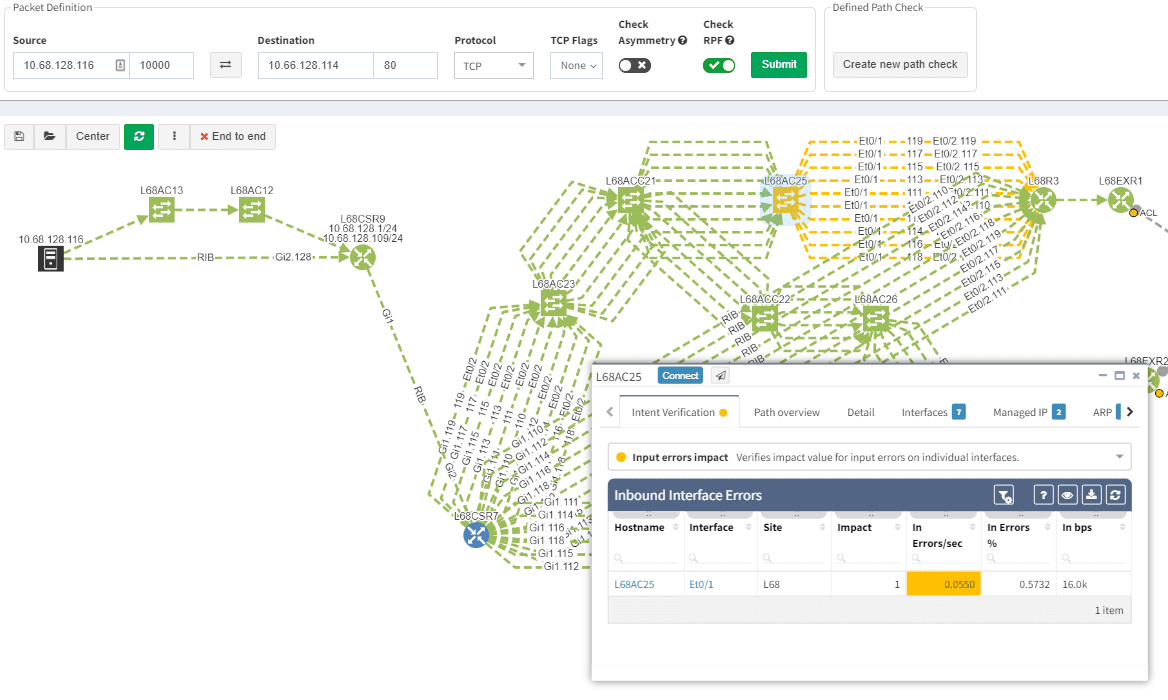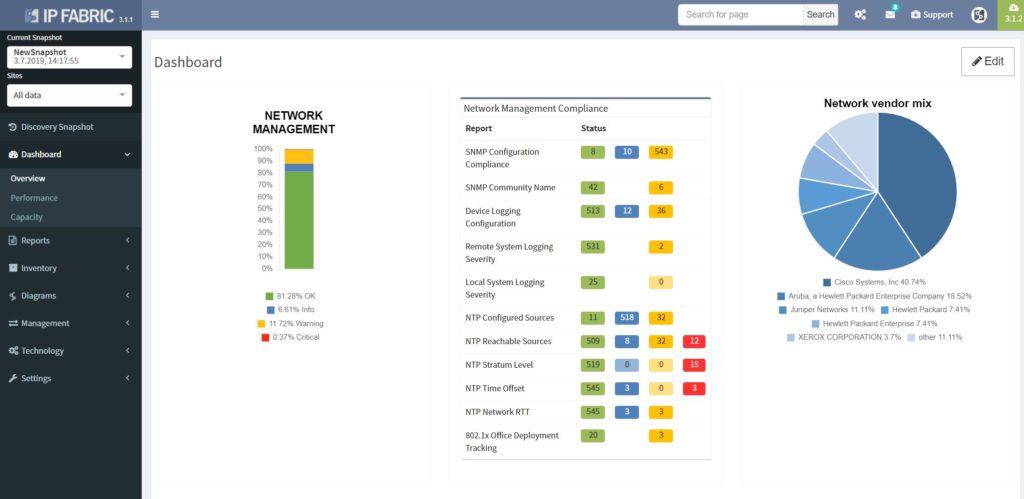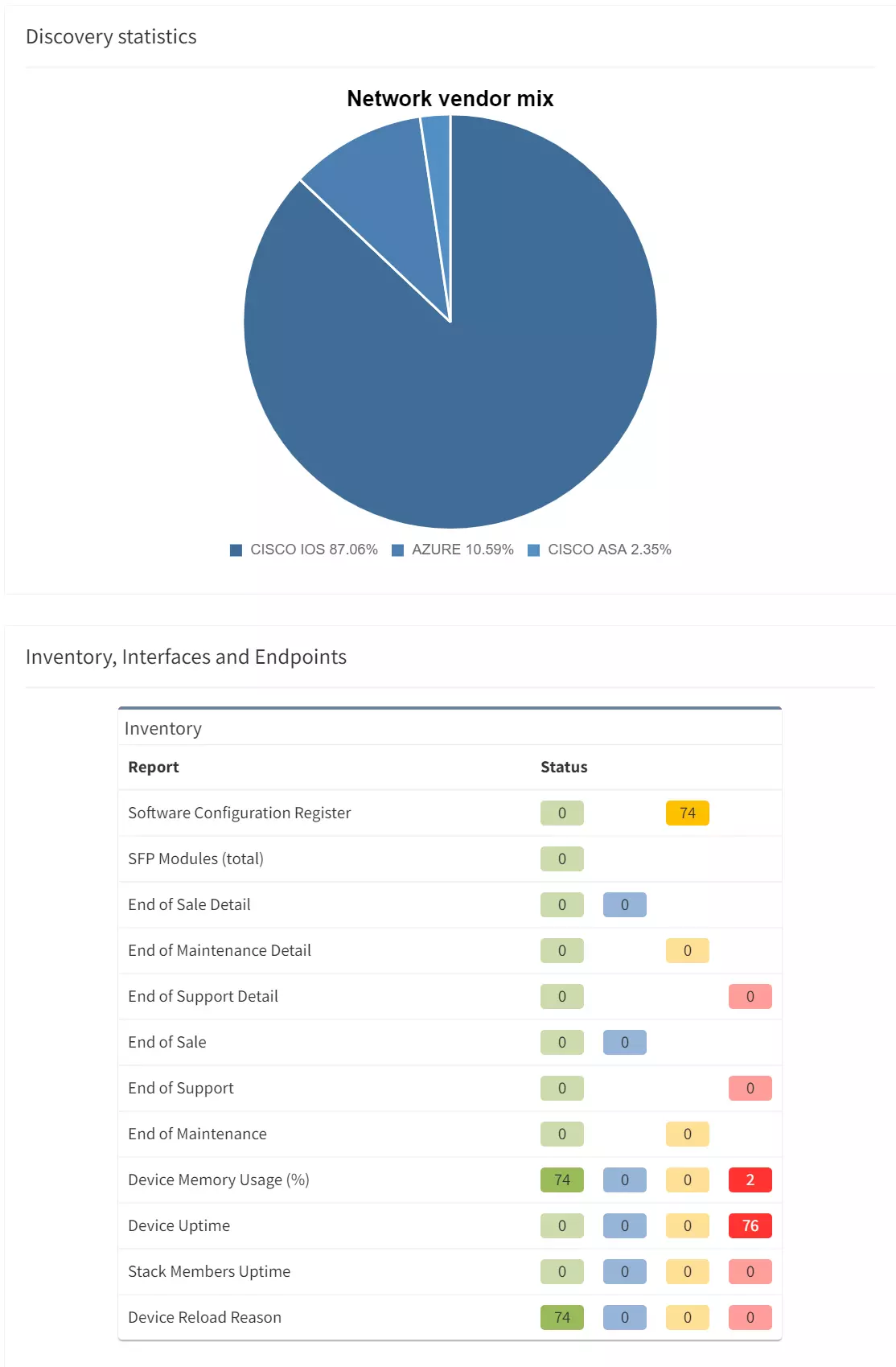

The network management platform is a universal tool, that should allow monitoring and configuring of all network devices. But there may be more pieces to the puzzle. We will try to unveil some of the options for network management and how well-targeted analytics can be complementary to the solution.
Every network management should include some kind of monitoring solution. But they are mostly only static tools based on information that the administrator provides. The monitoring is usually based on ICMP probes or SNMP data regularly collected from the network. Therefore, it answers many questions those including:
But there's one very important one that should be asked at the very beginning. What is in my network?

In any complex network, the automated network discovery should be answering just that. The IP Fabric analytic platform is equipped with a discovery algorithm that frequently collects data. It can identify new devices or technologies on the network and track changes in time. The frequency of snapshots depends on everyone's needs. It can be either once a day, four times a day or anytime on-demand.
With every new discovery snapshot, there are new data available and possibly new interfaces or devices to monitor. In conclusion, various monitoring or network management platforms are capable of reading data from other APIs. Imagine that after every discovery, you could automatically add new devices under the monitoring.
Network management and support systems can change in the process of every network development. For every change, the network needs to be adjusted. It can be either adding new SNMP servers for collecting data or change the Syslog server for security perimeter. After every implementation, we need to verify that all was configured or changed correctly.
This type of verification is usually not provided by standard support systems. The administrator has to either manually collect and verify a big amount of data or pray for the best. That's where the network analytics comes into place. With automated verification schemes, the IP Fabric provides compliance on the fly. he platform collects and verifies data periodically with every new snapshot. Users can adjust each individual compliance easily in the system and just watch the results.

CMDB (Configuration Management Database) is a must for any live network environment. If anything breaks one needs to have all possible config backups. Comparing the differences after any change should be standard as well.
The CMDB, Inventory and monitoring system should be always up to date and this should exclude manual intervention almost completely. The more the data reliant on manual update the more chances are it's never going to be 100% accurate.
Data collection from multivendor networks means to spend a lot of time on development and constantly troubleshoot output or you can simply use systems like IP Fabric that have been designed specifically for this task, hardened through time. Gathered data serve as a baseline for all operations and overall administration.
If you have found this article resourceful, please follow our company’s LinkedIn or Blog, where there will be more content emerging. Furthermore, if you would like to test our platform to observe how it can assist you in more efficiently managing your network, please write us through our web page www.ipfabric.io.
The network management platform is a universal tool, that should allow monitoring and configuring of all network devices. But there may be more pieces to the puzzle. We will try to unveil some of the options for network management and how well-targeted analytics can be complementary to the solution.
Every network management should include some kind of monitoring solution. But they are mostly only static tools based on information that the administrator provides. The monitoring is usually based on ICMP probes or SNMP data regularly collected from the network. Therefore, it answers many questions those including:
But there's one very important one that should be asked at the very beginning. What is in my network?

In any complex network, the automated network discovery should be answering just that. The IP Fabric analytic platform is equipped with a discovery algorithm that frequently collects data. It can identify new devices or technologies on the network and track changes in time. The frequency of snapshots depends on everyone's needs. It can be either once a day, four times a day or anytime on-demand.
With every new discovery snapshot, there are new data available and possibly new interfaces or devices to monitor. In conclusion, various monitoring or network management platforms are capable of reading data from other APIs. Imagine that after every discovery, you could automatically add new devices under the monitoring.
Network management and support systems can change in the process of every network development. For every change, the network needs to be adjusted. It can be either adding new SNMP servers for collecting data or change the Syslog server for security perimeter. After every implementation, we need to verify that all was configured or changed correctly.
This type of verification is usually not provided by standard support systems. The administrator has to either manually collect and verify a big amount of data or pray for the best. That's where the network analytics comes into place. With automated verification schemes, the IP Fabric provides compliance on the fly. he platform collects and verifies data periodically with every new snapshot. Users can adjust each individual compliance easily in the system and just watch the results.

CMDB (Configuration Management Database) is a must for any live network environment. If anything breaks one needs to have all possible config backups. Comparing the differences after any change should be standard as well.
The CMDB, Inventory and monitoring system should be always up to date and this should exclude manual intervention almost completely. The more the data reliant on manual update the more chances are it's never going to be 100% accurate.
Data collection from multivendor networks means to spend a lot of time on development and constantly troubleshoot output or you can simply use systems like IP Fabric that have been designed specifically for this task, hardened through time. Gathered data serve as a baseline for all operations and overall administration.
If you have found this article resourceful, please follow our company’s LinkedIn or Blog, where there will be more content emerging. Furthermore, if you would like to test our platform to observe how it can assist you in more efficiently managing your network, please write us through our web page www.ipfabric.io.




